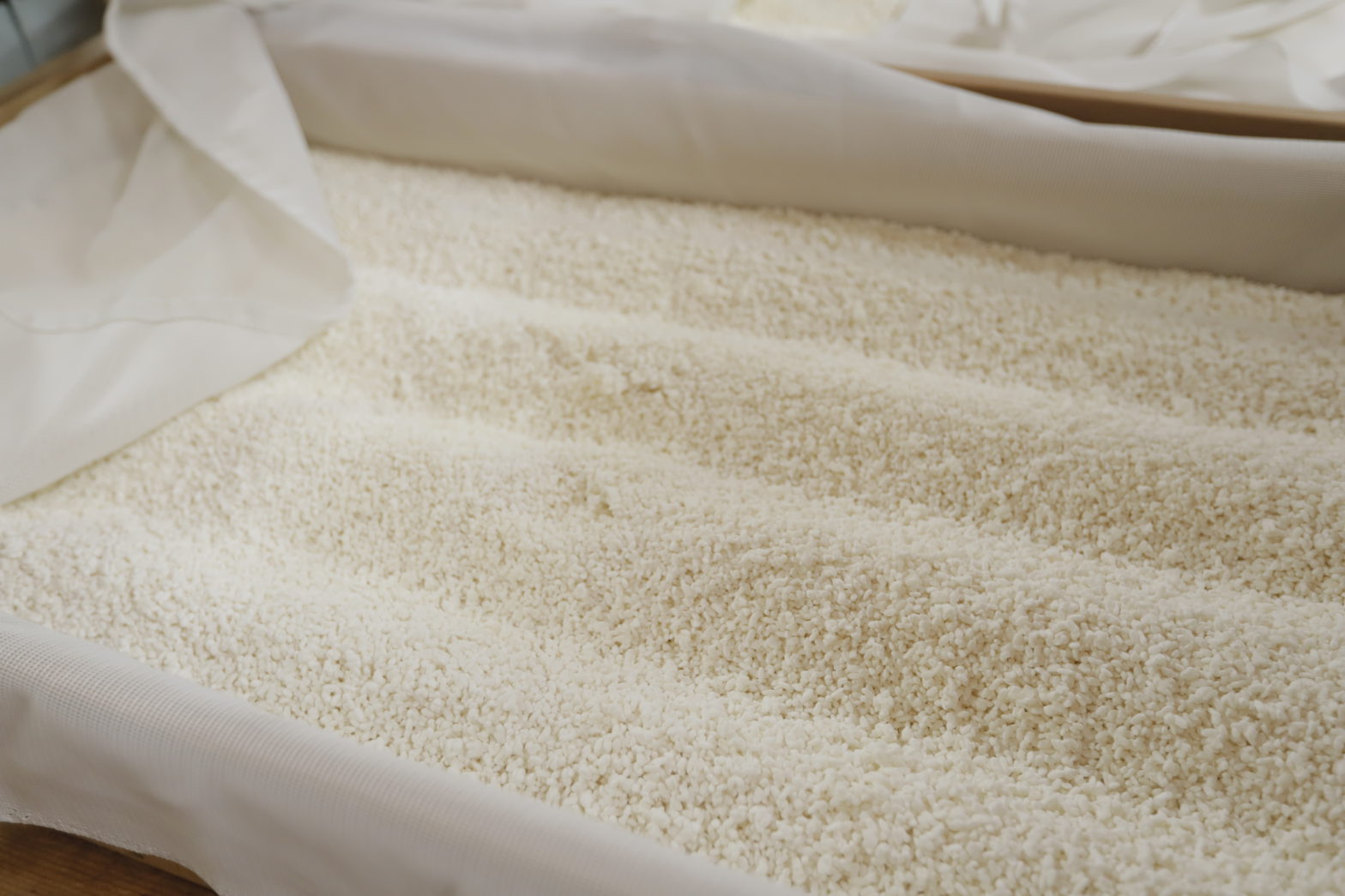Generally speaking, there are two types of koji, Sōhaze (総破精) “all propagation” and Tsukihaze (突き破精) “pierce propagation”.
As the Japanese literal meanings indicate, Sōhaze koji creates full koji propagation around the steamed rice, while Tsukihaze koji is a spotted koji fungus with hyphae extending well into the center of each steamed rice grain.
Koji extends their hyphae to access water which is essential for survival. If moisture is available on the surface of steamed rice, koji fungus propagates on the surface. However, if the surface of the steamed rice is dry, the hyphae extend into the core of steamed rice to seek water.
Koji releases enzymes as part of its biological processes, but the type and ratio of enzymes released differ according to the different types of koji.
In terms of saccharification, yeast can saccharify only when the chain of glucose (starch) is cut into a single molecule of glucose. Exoenzymes such as glucoamylase provide this “cutting” function at the end of the glucose chain. Endoenzymes such as α-amylase cut the glucose chain in the middle. Tsukihaze koji produces more glucoamylase than Sōhaze koji, whereas Sōhaze koji produces more α-amylase, which is not as efficient at producing single glucose molecules.
This is demonstrated even with the Toji [brewmaster]’s simple taste test: Tsukihaze koji gives an immediate sweet impression because the glucoamylase has already trimmed the glucose chain into a molecule, whereas Sōhaze koji takes time to produce the sweetness because first the chain is transformed into glucose clusters (maltose) by the α-amylase, which is then converted into a single glucose molecule by saliva.
In sake, the maltose produced by the Sōhaze koji is not used for saccharification, but remains in the moromi. For this reason, Tsukihaze koji produces sake with clear, pure, and sophisticated flavors and Sōhaze koji sake has more body and flavor (not only because of the maltose but also from the amino acids or peptides introduced because of the proteinaceous hyphae).
Sake brewers, therefore, tend to use Tsukihaze koji for Ginjo style sake and Sōhaze koji for Junmai.


